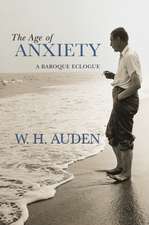Why Humans Like to Cry: Tragedy, Evolution, and the Brain
Autor Michael Trimbleen Limba Engleză Paperback – 28 aug 2014
Preț: 96.34 lei
Preț vechi: 103.80 lei
-7% Nou
Puncte Express: 145
Preț estimativ în valută:
18.44€ • 19.18$ • 15.22£
18.44€ • 19.18$ • 15.22£
Carte tipărită la comandă
Livrare economică 03-09 aprilie
Preluare comenzi: 021 569.72.76
Specificații
ISBN-13: 9780198713494
ISBN-10: 0198713495
Pagini: 242
Ilustrații: 12 black and white line drawings
Dimensiuni: 130 x 195 x 16 mm
Greutate: 0.2 kg
Editura: Oxford University Press
Colecția OUP Oxford
Locul publicării:Oxford, United Kingdom
ISBN-10: 0198713495
Pagini: 242
Ilustrații: 12 black and white line drawings
Dimensiuni: 130 x 195 x 16 mm
Greutate: 0.2 kg
Editura: Oxford University Press
Colecția OUP Oxford
Locul publicării:Oxford, United Kingdom
Recenzii
This is a fascinating cultural and neurological study about how humans are unique in shedding tears of sorrow, especially in the context of listening to music or attending the theatre...
Notă biografică
Michael Trimble is emeritus professor of Behavioural Neurology at the Institute of Neurology, Queen Square, London. His research for many years has been on the behavioural consequences of neurological disorders, especially epilepsy and movement disorders. He has a lifelong research interest in neuroanatomy, hence his ability to explore the neuroanatomical basis of crying. However, he is also a psychiatrist with much clinical experience of mood disorders, and had investigated the latter in patients using neurological techniques, such as brain imaging. He is the author of The Soul in the Brain (Johns Hopkins, 2007).






















